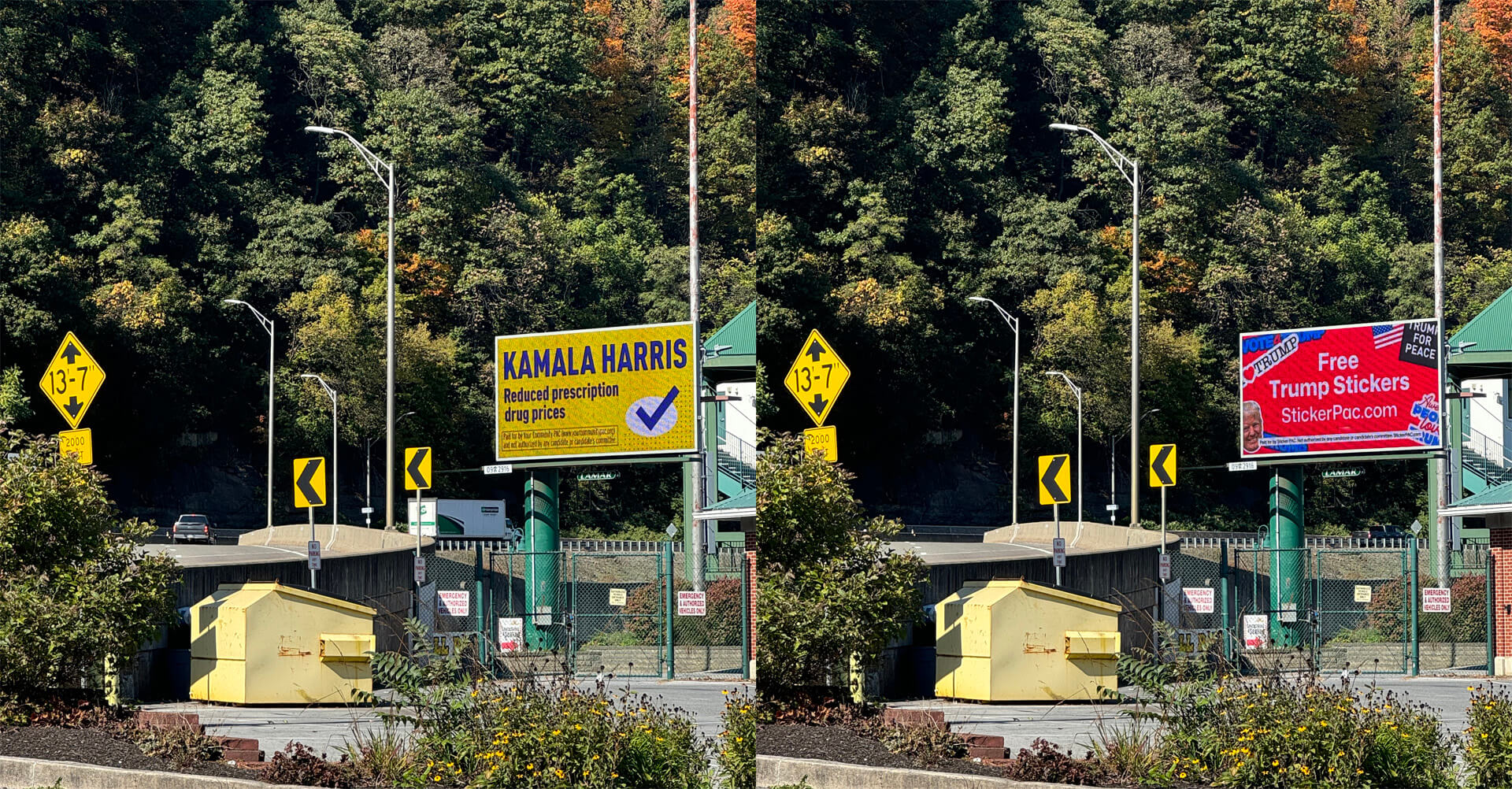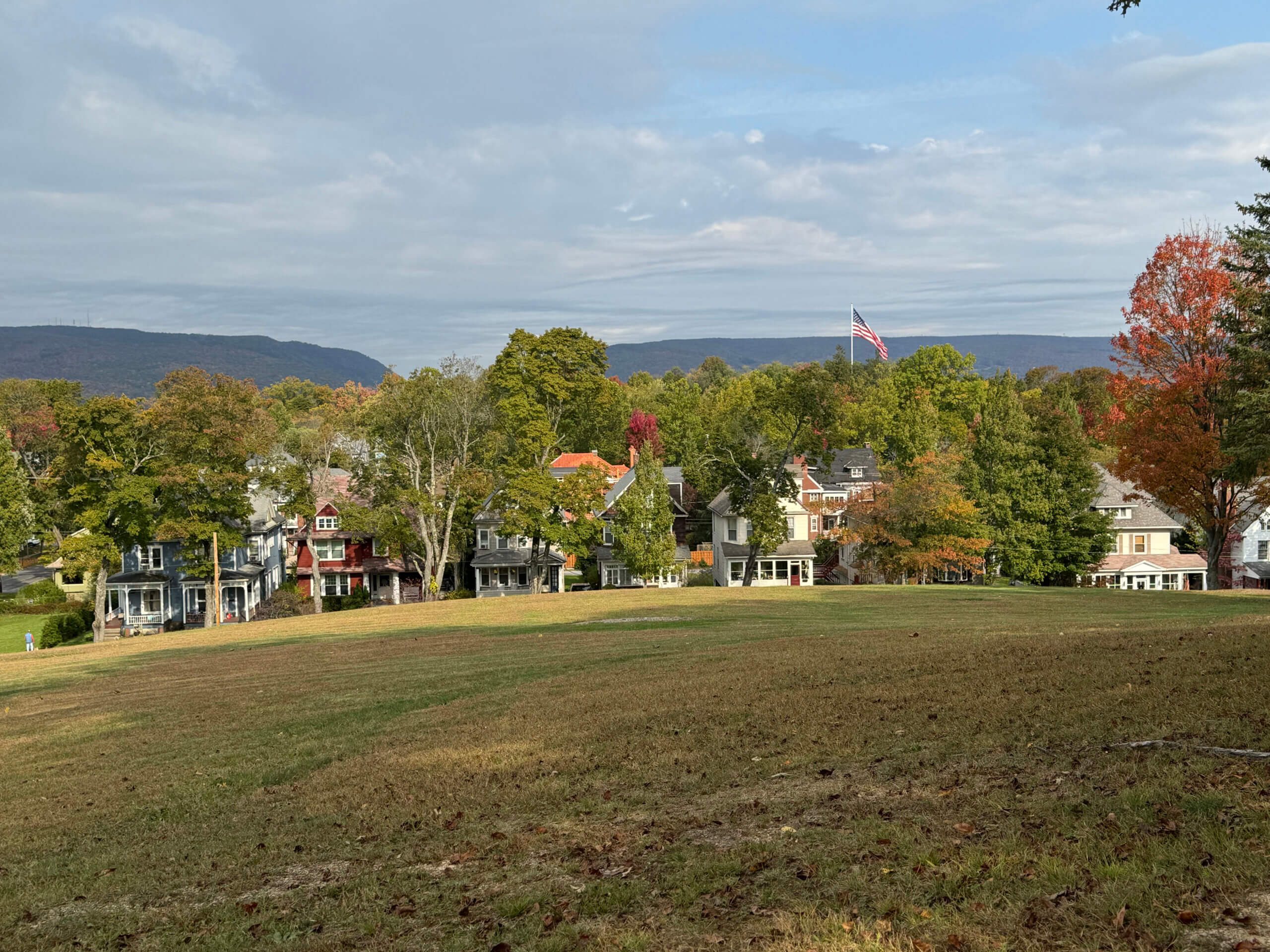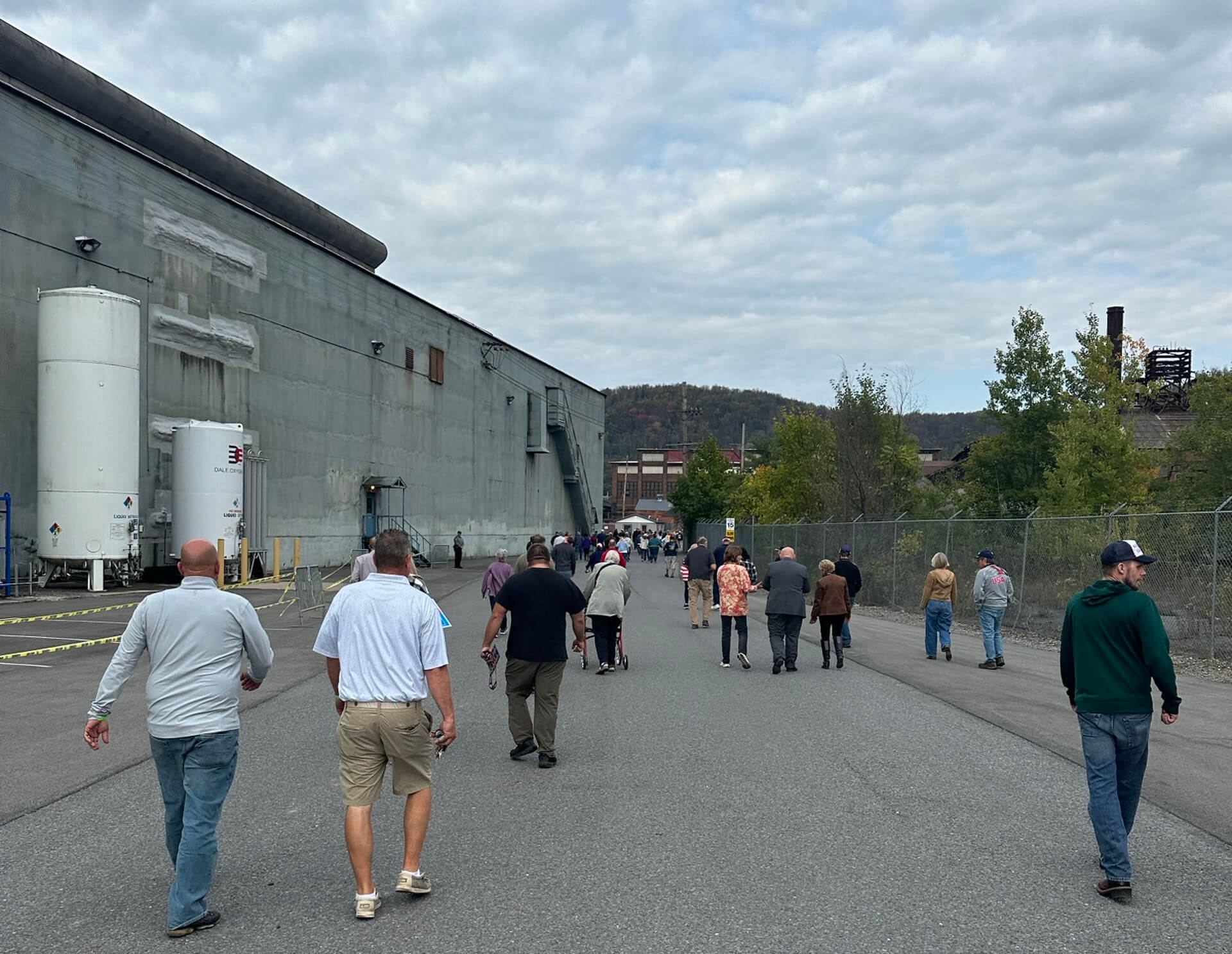Johnstown, Pennsylvania, is the swing town of the most influential swing state of the 2024 presidential election. No American president has been elected in the last six decades without winning Pennsylvania (the last to win without it was Kennedy in 1960). Union labor had reliably provided blue votes, but the 2024 election is different. And in Johnstown, the signs are everywhere.
I am visiting the town as an outsider—outside of the Rust Belt, outside of its history and the present realities of this small community, which has rolled with the punches and grappled with the losses. I am dropping in as a Loeb Fellow from Harvard for the 2024 Fall Study Tour; the very name “Harvard” enjoys its outsider-ness. Until a few weeks ago, I had never heard the term “study tour,” though I realize I had once had such a tour of my own home state—Montana.
In 2010, I was working as a policy fellow for the Wheeler Center for Public Policy, a nonpartisan research center, at Montana State University, my alma mater. The Wheeler Center believed an informed populace was critical to democracy and would host policy conferences on broad topics—from K-12 education to energy development to climate change—and their respective impacts on the state. At the time, all of Montana’s highest offices (save its lone congressional seat) were held by Democrats. That summer, before my senior year of college, I had the idea to spend time in some of Montana’s smaller towns and convinced the Center to sponsor a “study tour” to visit these communities with another one of the fellows, a close friend. I was curious about how other Montanans thought about and acted on the issues facing their friends, families, and neighbors.
We organized seventeen stops covering about 1,500 miles and met with over 150 people: farmers and ranchers, tribal elders and legislators, nonprofit leaders and business owners. We heard concerns about climate change and what would happen to the town of Colstrip when its aging coal fired plant shut down. We talked to conservative farmers about their concerns regarding GMO seeds. We learned about how the downwind half of the town of Anaconda can’t grow vegetable gardens because their topsoil is so contaminated from a century of smelting ore. These open and honest conversations surprised me and gave me some sense of hope for democracy and our ability for working across differences.
And while typically we were received warmly as outsiders in these Montana communities, a few showed us different signs. One community had experienced significant population losses after its major employer, a railroad repair shop, had closed three decades earlier. The community leaders we met were resigned to what they saw as a fate similar to the roof of the railroad workshop: dry rot and slow collapse. In another community, 190 miles to the north, we had the largest turnout to a single meeting—35 residents—who were furious about the threats to a cross border pipeline with Canada. The pipeline’s representatives had promised the community at least 300 good paying jobs, and they were angry and skeptical of us, believing we were undercover environmental lawyers attempting to undermine the project. It took us about half an hour of assurances, passing our student ID cards around the crowd, to convince them otherwise. I never understood that their hostility to us as outsiders was a foreboding sign.
Fourteen years later, I’m running up Millbrook Road in Johnstown, a rise of about five hundred feet along its winding asphalt. I pass a home with a collapsed roof across the road from others that display TRUMP 2024 signs in their small yards. As I reach the top of the road, the sky opens up, as do the lot sizes.
It’s not long before I come across a Harris-Walz sign and quickly presume the political divide is an economic one. But as I continue, it becomes clear what a swing state town looks like. For every block concentrated with Harris signs, there is another with Trump signs. As I run farther, tallying the political signs on each block, I end up with an equal split. Most striking is what some residents aren’t saying, at least publicly. For every house that has political signage, there seem to be two without visible signals. Perhaps the partisan temperature has reached the point where sacrificing relationships with neighbors isn’t worth the gesture of a political yard sign. Maybe the absence of signs means they have just given up.
The next day, vice presidential candidate J.D. Vance holds a rally in Johnstown. Surrounded by locally manufactured military vehicles, yellow cranes spanning the industrial workshop, and a gigantic American flag, Vance repeats the familiar tropes from his debate a few weeks ago. He smoothly lays the responsibility for each of the community’s challenges at the feet of his opponent and immigrants. He promises how he and his boss will change things, alleviate all of the pain the community feels. Unsurprisingly, no policy or local specifics are offered, only platitudes and rage.
 Meanwhile, another rally attendee, sitting in the grandstand over my shoulder, is preoccupied with the outsider-ness of one of our companions. She’s watching our every move, commenting that we must be Democrats. Responding to my honest explanation for why our friend had to stand up and leave the maddening scrum of seats alongside the lectern, she says, “Bullshit.”
Meanwhile, another rally attendee, sitting in the grandstand over my shoulder, is preoccupied with the outsider-ness of one of our companions. She’s watching our every move, commenting that we must be Democrats. Responding to my honest explanation for why our friend had to stand up and leave the maddening scrum of seats alongside the lectern, she says, “Bullshit.”
In my view, bullshit is profiting off a community’s pain. Bullshit is promising that an outsider will solve everyone’s problems for them. Leaving the rally, I feel empty: empty of energy and empty of the kind of hope I once felt after chatting with a sugar beet farmer in a gas station diner back home in Montana.
The 2024 Loeb Fellowship Fall Study Tour of Johnstown has brought in not only other Harvard folks but also students from Columbia University, who are close to the age I was on my first “study tour” of Montana. I wonder what they think. Do they see signs of hope in our ability to meet with others and work toward common goals: like small towns that can retain their talented youth, support local economic development, and clean up their environment?
 Or do they see what I now see: signs of late stage democracy and a world view divided into insiders and outsiders, where some of us signal political loyalty, some stay silent, and most of us look for someone else to lead and someone to blame?
Or do they see what I now see: signs of late stage democracy and a world view divided into insiders and outsiders, where some of us signal political loyalty, some stay silent, and most of us look for someone else to lead and someone to blame?
Thank you to Matt Kiefer ’96 for contributing images to this story.



 Meanwhile, another rally attendee, sitting in the grandstand over my shoulder, is preoccupied with the outsider-ness of one of our companions. She’s watching our every move, commenting that we must be Democrats. Responding to my honest explanation for why our friend had to stand up and leave the maddening scrum of seats alongside the lectern, she says, “Bullshit.”
Meanwhile, another rally attendee, sitting in the grandstand over my shoulder, is preoccupied with the outsider-ness of one of our companions. She’s watching our every move, commenting that we must be Democrats. Responding to my honest explanation for why our friend had to stand up and leave the maddening scrum of seats alongside the lectern, she says, “Bullshit.” Or do they see what I now see: signs of late stage democracy and a world view divided into insiders and outsiders, where some of us signal political loyalty, some stay silent, and most of us look for someone else to lead and someone to blame?
Or do they see what I now see: signs of late stage democracy and a world view divided into insiders and outsiders, where some of us signal political loyalty, some stay silent, and most of us look for someone else to lead and someone to blame?